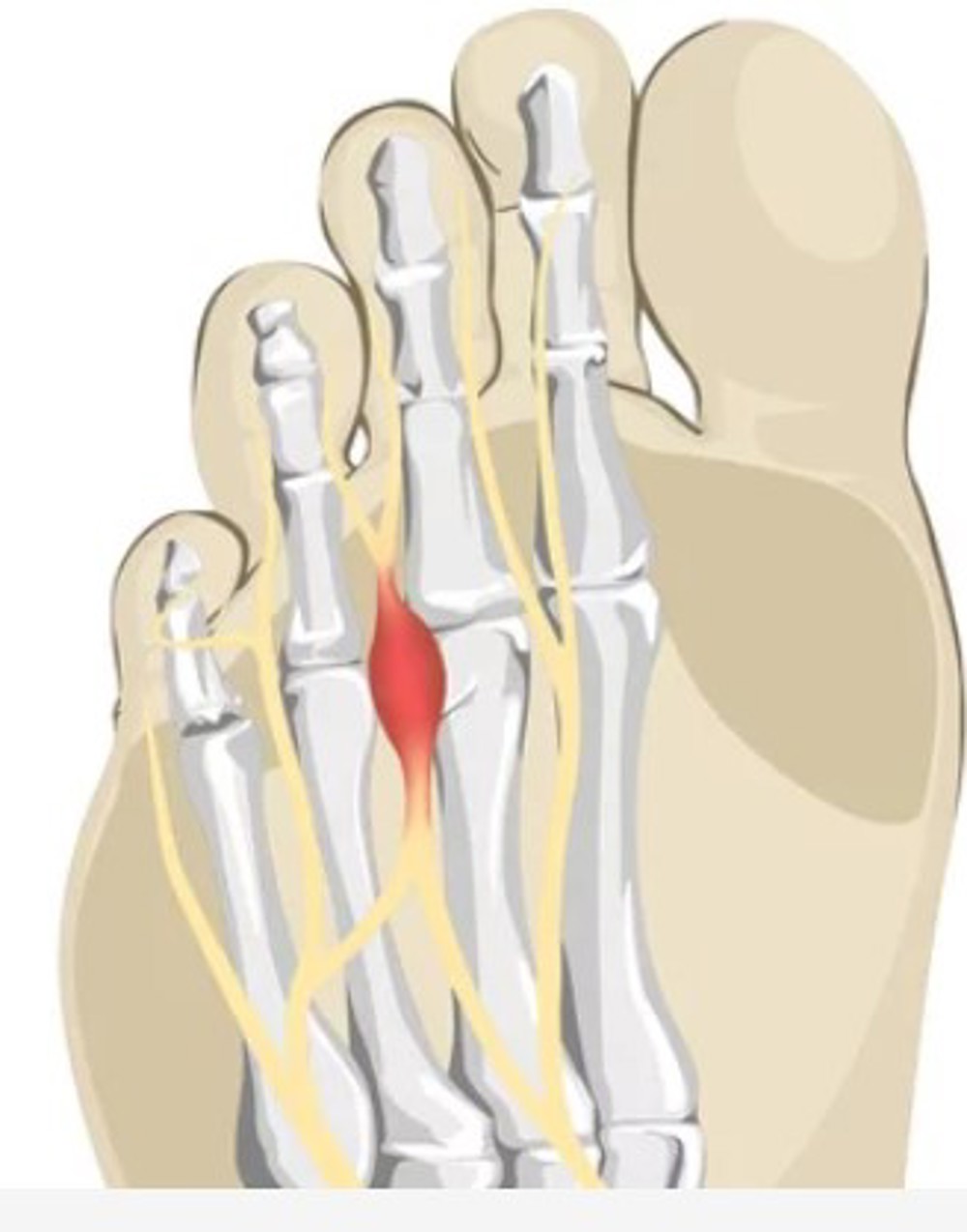What is a Morton’s Neuroma?
Morton’s Neuroma is a problem where there is a thickening of the tissue which surrounds the nerve between the bones of the forefoot (metatarsals) most commonly occurring between the 3rd & 4th metatarsals. This can result in pain.
Neuromas are not dangerous, and will not cause problems other than in the foot. Many studies show that females are affected more than men in a ratio of 7:3.

Morton's Neuroma
What causes a Morton’s Neuroma?
It is not really known why people get Morton’s neuroma. Theories include: tight fitting footwear, flatter or highly arched feet, altered toe positions, repetitive high forces, such as running, dancing and athletics, may all contribute to Morton’s neuroma forming.
Symptoms
Common symptoms include:
- Pain when walking
- Numbness in the foot and toes
- Pins and needles in toes
- Sharp shooting pains
- Relief when shoes are removed
- A feeling like walking on a pebble
Self Treatment Advice
- REST - try to temporarily stop or reduce any high load activities, which can irritate the neuroma and surrounding soft tissues, such as running, dancing, athletics or any activities which cause pain.
- CHANGE FOOTWEAR - make sure footwear is well fitted, supportive, low heeled, wide at the toes, is secure on the foot and doesn’t have a very thin sole.
- See Footwear advice
- ICE/HEAT THERAPY - avoid both if diabetic or in doubt if you have poor circulation or loss of feeling in your feet. Ice packs (wrapped in a cloth) can be used for 15-20 minutes 2-3 x a day. You can also use a heat pack after using the ice pack for a further 15-20 minutes, this is called CONTRAST THERAPY and may help to reduce inflammation of the soft tissues surrounding the neuroma.
- NHS Inform online advice – has further information on ice/heat, medication advice.
- COLD BOTTLE MASSAGE/STRETCH - you may find rolling your foot over a cold bottle helps reduce symptoms short term.
- MEDICATION - over the counter painkillers may ease the pain. Always follow the instructions on the packet or speak with your local pharmacist.
- EXERCISES: To help with foot function and reduce load on the front of the foot when we walk we need a good range of motion at the ankle joint. If the calf muscles are tight it is important to stretch these.
- See Calf stretching seated and standing link below.
- Exercising the foot muscles can help with improved balance and strength
- See Intrinsic foot strengthening exercises link below.
- TAPING/PADDING: See below for instructions.
- METATARSAL SUPPORTS -You may wish to try metatarsal arch supports or off the shelf orthoses which have a metatarsal raise inbuilt. This will help improve the arch and reduce pressure across the forefoot. If this increases pain remove the support.
- TOE SEPARATORS - These are removable supports which keep toes apart improving alignment (Sometimes called YogaToes)
- WEIGHT LOSS - if you are overweight weight loss may help reduce forefoot overloading.
When to seek help
If you try the advice as recommended for 6 weeks and you are still experiencing pain or your symptoms are worsening a referral to the podiatry department may be appropriate. Continue with the above advice until your appointment.
Surgery
If, following all podiatry interventions, you continue to experience significant pain, your podiatrist may recommend a referral for an Orthopaedic opinion to discuss surgical options available to you. Surgery should only be considered if ALL Non-surgical interventions have been unsuccessful.



